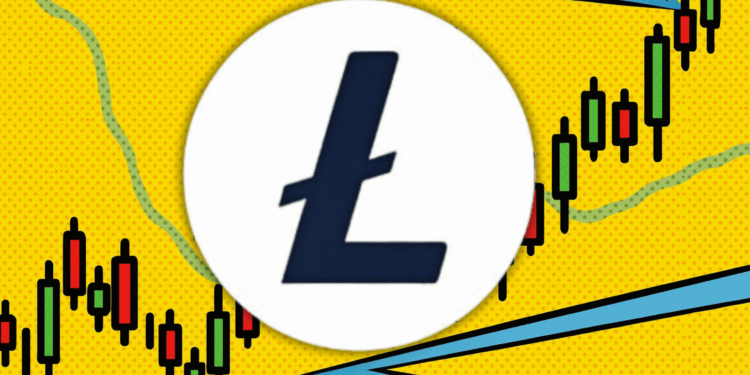- Litecoin stands out as a fast, secure, and low-cost alternative to Bitcoin, built for everyday transactions and backed by over a decade of uninterrupted uptime and strong fundamentals like SegWit, MimbleWimble privacy, and regular halvings.
- Its evolving utility includes privacy-enhanced payments, .LTC domains, atomic swaps, and real-world integrations like Flexa and Nexus Wallet, making it more than just digital silver—it’s a serious player in practical crypto finance.
- With upcoming milestones like LitVM smart contracts, ETF approval prospects, and deeper Layer 2 adoption, Litecoin is positioning itself to thrive as a scalable, privacy-conscious DeFi layer in the years ahead.
Litecoin, the battle-hardened veteran of blockchain space, continues to blaze its own trail as the fast, reliable alternative in a world flooded with flashy new chains and experimental protocols. While still facing scrutiny from critics who claim it lacks novelty and fighting off competition from agile DeFi-enabled newcomers, the blockchain project has matured into something extraordinary.
Far from resting on its achievements, Litecoin continuously adapts and evolves, expanding its utility while preserving the core principles of decentralization, speed, and low cost. So, let us take a closer look at the network that quietly dominated 2024 and shows no signs of fading in 2025.
What Is Litecoin?
Litecoin is a peer-to-peer internet currency created in 2011 as a fork of Bitcoin but optimized to deliver faster transactions and greater efficiency. It is a fully decentralized network, governed by open-source protocols and cryptographic proof rather than central authorities. Its goal is straightforward: enable anyone, anywhere, to send and receive digital money instantly, at near-zero cost.
The primary problem Litecoin addresses is simple but crucial – the impracticality of Bitcoin for small, fast, everyday transactions. While Bitcoin transactions can take from 10 minutes to over an hour and come with fluctuating fees, Litecoin’s average confirmation time hovers around 2.5 minutes with fees often less than a cent. This makes it far more suitable for day-to-day commerce and microtransactions.
Beyond payments, Litecoin tackles accessibility. Unlike many complex or centralized financial services, Litecoin is permissionless and open to anyone with an internet connection. It offers financial inclusion to the estimated 1.4 billion unbanked globally. Without intermediaries or gatekeepers, users retain full control over their assets.
Finally, it maintains robust security and stability. With over a decade of uninterrupted network operation and no major security breaches, Litecoin has proven itself as a reliable digital asset and payment system, capable of supporting trillions of dollars in transactions globally.
Litecoin’s Core Components
Litecoin’s architecture and ecosystem are built from several key components that together empower its functionality and user appeal. This includes:
Scrypt Algorithm
Unlike Bitcoin’s SHA-256, Litecoin utilizes Scrypt, a memory-intensive proof-of-work algorithm. Initially selected to discourage mining centralization and ASIC dominance, Scrypt enabled broader access to mining for individual GPU users. Although ASICs have caught up, Scrypt still maintains a unique hardware niche and fosters miner diversity.
Proof of Work (PoW)
Litecoin’s consensus mechanism mirrors Bitcoin’s – miners solve computational puzzles to validate transactions and add new blocks to the chain. Each successful miner is rewarded with newly minted LTC. This distributed process keeps the network secure and censorship-resistant.
Segregated Witness (SegWit)
SegWit was activated early in Litecoin, separating transaction data to enable greater throughput and lower fees. It also laid the groundwork for advanced features like atomic swaps and Lightning Network integration.
MimbleWimble Extension Blocks (MWEB)
MWEB is Litecoin’s privacy powerhouse. Transactions within MWEB do not reveal senders, receivers, or amounts publicly. It is an optional layer that preserves transparency for regular transfers while allowing users to switch on privacy when needed. It integrates seamlessly into existing block structures and has seen growing adoption through wallets like Nexus Wallet.
Halving Mechanism
Litecoin undergoes a programmed halving every 840,000 blocks, reducing mining rewards and slowing inflation. In 2023, the block reward dropped to 6.25 LTC, and it is expected to halve again in 2027. These cycles simulate digital scarcity and echo monetary discipline.
How Does It Work?
Litecoin operates as a decentralized digital currency that users send and receive over its blockchain network. When a user initiates a transaction, it is broadcast to the Litecoin network where miners verify its validity by solving cryptographic puzzles using the Scrypt algorithm.
Once verified, the transaction is grouped into a block, added to the blockchain, and confirmed roughly every 2.5 minutes. This rapid confirmation time is critical for use cases that require near-instant settlement, such as retail payments or peer-to-peer transfers.
Users control their funds through private keys stored in wallets. Wallet encryption ensures that only authorized parties can spend these funds, while new innovations such as optional privacy features via MimbleWimble Extension Blocks (MWEB).
In addition to all this, Litecoin’s protocol enforces rules for supply and block generation, ensuring scarcity and network stability. As miners receive diminishing rewards over time, transaction fees are expected to play a larger role in securing the network’s future.
Utility and Offerings
Litecoin has evolved from simple payments to an expansive ecosystem of tools and integrations that make it one of the most functional and adaptable blockchains in the crypto world today. Its utility now spans everything from private peer-to-peer transactions to real-world retail payments and identity-linked domains—proving that this network is far more than just digital silver.
Nexus Wallet
Nexus is Litecoin’s flagship wallet, offering non-custodial control, private payments, Flexa checkout, and ultra-low transaction fees. Designed for real-world use, it replaces Litewallet as the go-to hub for LTC users. With an intuitive interface and future support for Lightning and atomic swaps, Nexus positions Litecoin as a complete digital money solution.
Flexa Pay Integration
Litecoin users can pay at over 40,000 retail locations using Flexa. Transactions settle instantly with zero volatility for merchants. This real-world integration makes LTC spendable like traditional currency, bringing crypto to point-of-sale environments with speed and reliability unmatched by most other assets.
Atomic Swaps
Atomic swaps allow trustless, peer-to-peer exchanges between Litecoin and other cryptocurrencies—no centralized exchanges, no wrapped tokens. Essentially these swaps enable seamless, cross-chain trading from your own wallet, reinforcing Litecoin’s utility as a borderless, open financial tool.
.LTC Domains
In partnership with Unstoppable Domains, Litecoin now offers personalized .LTC Web3 identities. These domains replace complex wallet addresses and serve as usernames, payment IDs, and login credentials across Web3 apps. Fully user-owned, .LTC domains give the community a recognizable, permanent presence on the decentralized web.
SegWit and Layer 2 Support
Litecoin adopted SegWit early, boosting capacity and lowering fees. This upgrade enabled compatibility with upcoming Layer 2 tech like Lightning Network. Once integrated, users will gain access to instant, sub-cent micropayments—ideal for streaming, tipping, and global remittance at scale.
LitVM and Smart Contracts
LitVM brings smart contract capabilities to Litecoin through a zero-knowledge rollup stack. Developed with BitcoinOS and Polygon’s SDK, it enables Ethereum-style dApps on Litecoin’s secure, UTXO-based architecture. This extends Litecoin’s utility into NFTs, programmable vaults, and advanced DeFi—without bloating its base chain.
Milestones and Achievements
Litecoin’s history is punctuated by meaningful milestones and technological upgrades. This includes:
- 2011 – Launch: Litecoin debuts as Bitcoin’s first major fork, offering faster block times and lower-cost peer-to-peer transactions.
- 2013 – First Exchange Listings: LTC gains traction with early listings on major crypto exchanges, expanding access and daily trading volume.
- 2017 – SegWit Activation: Becomes first top-ten coin to activate Segregated Witness, reducing transaction size and enabling advanced features.
- 2017 – Lightning Network Tests: Successfully executes the world’s first Lightning Network transaction, paving the way for instant off-chain payments.
- 2021 – MWEB Implementation: Introduces opt-in privacy via MimbleWimble Extension Blocks, enhancing fungibility and confidential value transfer.
- 2023 – Third Halving Event: Block rewards cut to 6.25 LTC, reinforcing scarcity and long-term economic sustainability of the network.
- 2024 – Institutional Entry: Fidelity adds LTC, Grayscale accumulates 2M+ LTC, and Coinbase launches certified Litecoin futures.
- 2024 – ETF Momentum: Canary Capital files first Litecoin Spot ETF application; Bloomberg names LTC top altcoin for ETF approval.
- 2024 – Record Usage: Over 39 million LTC transactions processed in one year, with lowest annual average fee at $0.0091.
- 2025 – 300 Million Transactions: Litecoin hits 300 million lifetime transactions, cementing its role in global, real-world crypto adoption.
- 2025 – Zero Downtime Record: Approximately 14 years with no network halts, hacks, or breaches — unmatched operational continuity in crypto.
Roadmap and Plans Ahead
Litecoin’s trajectory into 2025 and beyond is ambitious, with a number of key developments that continue to push the envelope. This includes:
- ETF Approval: Regulatory watchers expect Litecoin’s spot ETF to be among the first approved altcoin funds in the U.S., legitimizing it for traditional investment accounts.
- LitVM Expansion: Development continues on smart contracts and zero-knowledge rollups within Litecoin’s UTXO model. This opens doors to DeFi, gaming, and tokenization.
- Nexus Evolution: Atomic swaps, Lightning Network integration, and enhanced privacy tools are slated for the next phases of wallet updates.
- Expanded .LTC Domain Usage: Expect deeper domain integration across apps, profiles, and services as ICANN approval progresses.
Final Thoughts
In conclusion, Litecoin began as an experiment in speed and efficiency, a humble fork of Bitcoin with its sights set on practical payments. More than a decade later, it has blossomed into a robust, privacy-conscious, and institutionally recognized currency—quietly powering financial freedom under the radar of hype-driven markets. So, as markets shift and new trends emerge, Litecoin is well positioned to remain a foundational force in decentralized finance.














